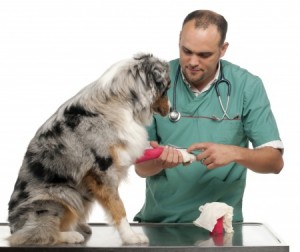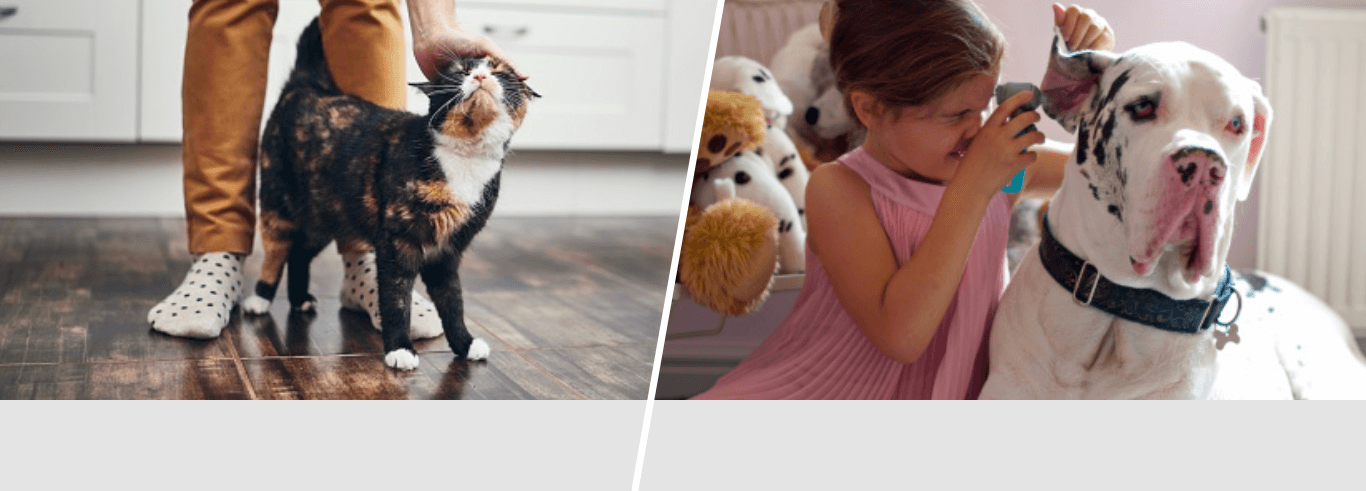How to comfort a lame dog
When your dog is suffering in any sense, it can be difficult to watch. So, it is important to know how to comfort your dog and aid them to recovery when they are in pain. Lameness is often a problem in dogs, especially those with joint problems or those prone to injury.
If you’re worried your dog has lame limbs and could be suffering, it is crucial to seek veterinary advice both in terms of reaching a diagnosis and receiving guidance about management strategies. Read our tips below to understand the signs and causes as well as how to make your dog feel comfortable and eventually recover.
What is lameness in dogs?
Lameness means that a dog cannot properly use one or more of their limbs. This disturbance in the movement or ability to move their body means they are likely in pain or suffering from an injury.
Is my dog suffering from lameness?
You can usually spot if your dog is suffering from lameness if they have one or more of the following symptoms:
- Decreased range of motion
- Loss of muscle mass
- Pain when moving or standing
- Abnormal posture and movement
- Swollen joins or bones
- Joint movement produces a grating sound
What are the causes of lameness in dogs?
There are so many different causes of lameness in dogs and diagnosing the underlying reason for your dog limping can only be done by a veterinary surgeon.
Lameness can be separated into short term lameness that often gets better by itself, and longer term and more serious lameness that perhaps requires surgery or ongoing medical management. If in doubt, always contact your vet for advice.
Dogs leap and jump all the time and can be prone to injury. Even older animals can sustain injury if they jar themselves suddenly or over exert themselves. As a result, a large number of cases of lameness are temporary, but it always best to first seek medical advice before making this assumption.
Top tips to help your lame dog with recovery
Rest and confinement
The most important part of your dog’s recovery is rest. Rest means as little exercise as possible:
- No playing with your dog in the house or garden.
- No allowing your dog to jump up on his hind legs.
- No jumping on or off furniture.
- No going up and down stairs and no jumping in and out of cars.
Rest also means no walks, even short ones. It is also worth putting your dog onto a lead to go to the toilet in the garden to prevent your dog running around. You must think of your dog like a small child and enforce rest. It is better however, after the rest period, to have 3 or 4 short controlled walks than risk an uncontrolled and harmful energetic outburst from your frustrated dog.
An effective method of resting and confinement is with a dog cage. These are readily available to purchase from larger pet shops and catalogue stores. They come in a range of sizes to accommodate both small and large dogs.
Seek medical advice
Sometimes it is essential for your pet to take medication as directed by a veterinary surgeon. Medications such as anti-inflammatories or painkillers can help your dog feel more at ease and reduce swelling and pain that lameness can cause.
Change your dog’s diet to accommodate their inactivity
Whilst your dog is on a restricted exercise regime it is worth reviewing your dog’s diet. If you continue with the same level of daily feeding there is a high chance your dog will gain weight, which is the last thing a dog with a lame leg needs.
It’s recommended to remove up to 25% of your dog’s daily intake when reducing their diet. Alternatively, rather than removing food from your dog’s diet, most of the dog food companies offer lower calorie diet versions of their food products. These products are available in most supermarkets and pet stores.
Take your dog swimming
Swimming is an excellent way to reintroduce exercise to a rested dog if they enjoy it. Swimming will exercise the joints and muscles but without negatively impacting on the limbs, which can happen with exercise such as running. It is recommended to have controlled and supervised swimming via a dog swimming pool.
Obviously, this should not include scrambling down into and out of rivers and ponds, which would only make things worse.
Don’t apply dressings or bandages to the lame leg
There is no need to attempt to apply a bandage/dressing to your dog’s leg. In fact, you are more likely to cause further problems by doing this as a wrongly applied dressing can cause circulation problems, pressure sores and thus cause further discomfort to the dog.
Adapt your home to keep your dog comfortable
Another useful tip for lame dog owners is to make sure the home is appropriate for them to live in. Minimise slippery surfaces, as these could make it more difficult for your dog to walk. Use rubber mats or rugs on wooden or slippery floors. Ensure that their dog beds are padded and thick for extra comfort. If possible, use ramps or shallow steps to help your dog move around the home. If you can, you could lift your pet to minimise over exertion on their side.
Keep an eye on the affected leg
Whilst your dog is still lame keep monitoring the affected leg. Watch out for changes in the leg on a daily basis – it can take time for swellings to develop.
When and how can you reintroduce exercise to your dog’s routine?
When your vet advises that your dog has recovered then you can restart exercise. A gentle, gradual pet exercise program is required, starting with gentle walks on the lead. Gradually extend the duration of the walks over a number of days and build back up to normal walks.
Getting back to ‘off the lead’ exercise should not be rushed, as allowing your dog too much exercise, too early, will cause a relapse. If the lameness flares up again then seek medical advice as this could mean the lameness has returned or was never properly corrected in the first instance. In this case take a step back and then carry on the program, but at a slower pace.
Owning a dog involves learning how to keep them fit and healthy. This varies by type of breed so make sure to do your research. This includes learning about pet exercise, health and diet which can improve their overall health and help to avoid situations of injury that can lead to lameness. Make sure your dog is covered with dog insurance in case of emergency trips to the vet.
It’s important to protect your dog with Argos Pet Insurance provided by Pinnacle Insurance plc should they experience any injuries or illnesses in the future. Explore our dog insurance policies today.
 Sorry, our lines are now closed
Sorry, our lines are now closed




